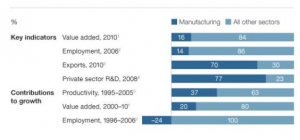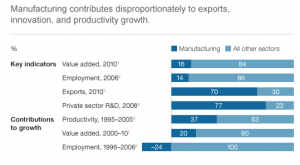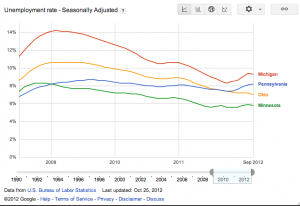Carl Levin Takes on Tax Cheats and Dark Money in Retirement Statement
[youtube]gLx2Xc1EXLg[/youtube]
Carl Levin, a pretty old but very healthy 78, but relatively young given MI’s very old Congressional delegation, announced his retirement today.
I don’t always agree with Levin. But he is one of the smartest, most effective (when he wants to be) Senators in the Senate. I will miss having him represent me in DC.
I expect Gary Peters will replace Levin.
I’m just as interested in how Levin will go out. Here’s most of his statement:
I have decided not to run for re-election in 2014.
This decision was extremely difficult because I love representing the people of Michigan in the U.S. Senate and fighting for the things that I believe are important to them.
As Barbara and I struggled with the question of whether I should run again, we focused on our belief that our country is at a crossroads that will determine our economic health and security for decades to come. We decided that I can best serve my state and nation by concentrating in the next two years on the challenging issues before us that I am in a position to help address; in other words, by doing my job without the distraction of campaigning for re-election.
Here are some of those issues. Years of bipartisan work by the Permanent Subcommittee on Investigations that I chair have shed light on tax avoidance schemes that are a major drain on our treasury. The huge loss of corporate tax receipts caused by the shift of U.S. corporate tax revenue to offshore tax havens is but one example of the egregious tax loopholes that we must end. Thirty of our most profitable companies paid no taxes over a recent three year period although they had over $150 billion in profits.
Tax avoidance schemes that have no economic justification or purpose other than to avoid paying taxes may be legal but they should not be. These schemes add hundreds of billions of dollars to the deficit. They lead to cuts in education, research, national security, law enforcement, infrastructure, food safety and other important investments in our nation. And they add to the tax burden of ordinary Americans who have to pick up the slack and accelerate the economic inequality in our country. I want to fight to bring an end to this unjustified drain on the Treasury.
Second, I want to ensure that the manufacturing renaissance that has led Michigan’s economic comeback continues. We’ve made progress in building the partnerships we need to help U.S. manufacturers succeed, but the next two years will be crucial to sustaining and building on that progress.
A third item I want to tackle is a growing blight on our political system that I believe I can help address: the use of secret money to fund political campaigns. Our tax laws are supposed to prevent secret contributions to tax exempt organizations for political purposes. My Permanent Subcommittee on Investigations needs to look into the failure of the IRS to enforce our tax laws and stem the flood of hundreds of millions of secret dollars flowing into our elections, eroding public confidence in our democracy.
Finally, the next two years will also be important in dealing with fiscal pressures on our military readiness. As Chairman of the Senate Armed Services Committee, I am determined to do all I can to address that issue. I also believe we need to pursue the rapid transfer of responsibility for Afghan security to the Afghans. And, as our troops come home, we must do a better job of caring for those who bear both the visible and invisible wounds of war.
These issues will have an enormous impact on the people of Michigan and the nation for years to come, and we need to confront them. I can think of no better way to spend the next two years than to devote all of my energy and attention to taking on these challenges.
Carl Levin has said his priorities in the next two years will include finding a way to tax the rich and prevent the rich from stealing our elections. Having made the decision he will not need those rich donors to fund his reelection, he will have significant flexibility to piss them off.
Levin has never been known to shy away from pissing people off in any case.
May Senator Levin go out in style, taking on those rich looters who are gutting our country.




